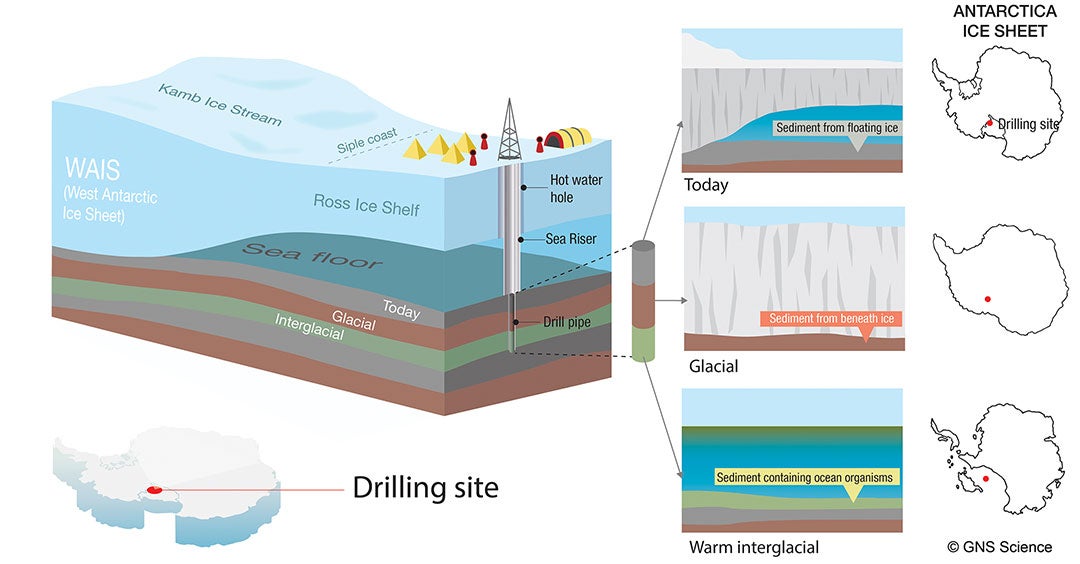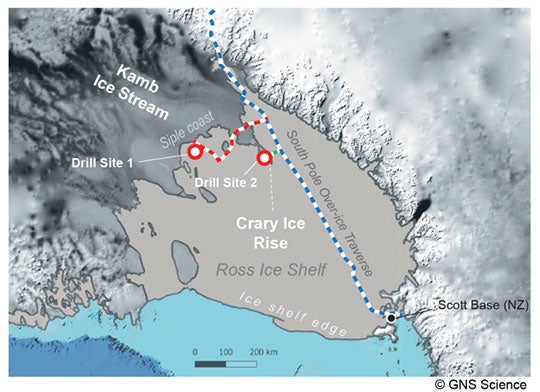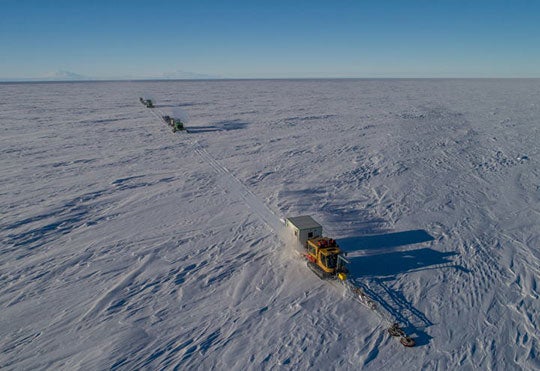Welcome to GeoUnion, the graduate student body of the Department of Earth, Environmental and Planetary Sciences. GeoUnion strives to supplement the overall graduate student experience at Rice and DEEPS. GeoUnion represents DEEPS in the overall Rice grad student community, acts as a liaison between students and faculty and organizes a number of intra- and inter-departmental events throughout the academic year.
| Date | Event |
|---|---|
| August 19-23 | O-Week |
| September 6-8 | Overnight Camping at San Marcos |
| September 13 | Welcome Barbecue |
| Cancelled because of Imelda | Pre-GSA talk |
| October 12-15 | Field Trip to Big Bend |
| October 25 | Halloween Kickball Tournament |
| November 26 | Multicultural Thanksgiving! |
| Dec 6 | Pre-AGU practice session |
| TBA | Enlightenment |
Here’s a list of the resources that you would need to use frequently as graduate students at Rice. The websites of the Rice Graduate Student Association (GSA), Office of International Students and Scholars (OISS), Graduate and Postdoctoral Studies (GPS) are platforms which graduate students can use to keep track of upcoming events, funding opportunities, changes in rules and regulations, etc.
Living in a vast city like Houston and exploring a new place can also be challenging, and so we have compiled a list of recommendations for housing and fun things to do in the Space City!
Rice University geobiologist tapped for Antarctic drilling mission
Team will search for fossil evidence of West Antarctic ice’s response to climate warming
Jade Boyd – Apr. 25, 2022

HOUSTON – (April 25, 2022) – Rice University geobiologist Jeanine Ash is participating in an Antarctic mission that aims to recover the first direct evidence that can answer one of the biggest questions about 21st-century climate change: How much will sea level rise and how fast?
Ash is part of a U.S. effort funded by the National Science Foundation (NSF) called the Sensitivity of the West Antarctic Ice Sheet to 2°C project, or SWAIS 2C, which is part of a larger international mission of the same name. Managed by Antarctica New Zealand, the mission involves more than 75 scientists from a dozen nations.
Ash, who studies the isotope signatures of organic compounds, hopes to be selected for the SWAIS 2C on-ice contingent that will use specialized hot-water and geological drill systems to punch through up to 1,000 feet of ice in two places on the periphery of the Ross Ice Shelf, a floating platform of ice as large as France.
“Our main goal while we’re out there is to get the sediments that lie below the ice shelf, but my group’s part of the science is acquiring and recording what we call ‘ephemeral properties,’” she said. “Those are things that will begin to change as soon as those sediment cores are at Earth’s surface temperatures, pressures and oxygen concentrations.”

Tiny bubbles of air, methane and other gases that have been trapped in the muddy sediments for hundreds of thousands of years will start fizzing away, like bubbles from a newly opened bottle of soda, as soon as the drilled sediment cores are raised above the ice.
“We also want to take samples of the microbial communities that are living in the sediments and preserve them so we can work on them in laboratories back home,” Ash said. “Those sorts of things absolutely have to happen the moment those cores come up.”

Scientists expect Earth’s climate to warm by 2 degrees Celsius in coming decades. The team’s goal is to recover sediments that will tell the story of how the West Antarctic Ice Sheet behaved when global temperatures were that warm in the past.
Earth has gone through at least 12 glacial periods in the last 1 million years. In each, ice caps grew, covering up to a third of the planet, and then melted and retreated in a period of interglacial warming like the one Earth’s in today.
At the warmest point in Earth’s last interglacial, about 125,000 years ago, global sea levels were about 20-30 feet higher than today. Antarctic ice melt could have contributed the bulk of water for those increases, but scientists aren’t certain that it did. And the magnitude of their uncertainty is a reflection of what’s missing from the scientific record: direct, fossil and sediment evidence of what happened in West Antarctica during that time and others like it.
Today, West Antarctica is covered with enough ice to raise ocean levels by more than 14 feet. But much of the land beneath the ice lies thousands of feet below sea level . During a number of interglacials, ice retreated from West Antarctica and it was a shallow sea. Sediments deposited on the seafloor during those periods likely contain evidence of how sea levels responded during interglacials when the climate warmed by 2 degrees Celsius.
To recover sediments, the SWAIS 2C team needs to drill through the ice at sites on the Ross Sea’s Siple Coast that were ice-free in the past. They’ll focus on one site in each of the two Antarctic summers 2022-23 and 2023-24.
Ash, the team’s lead geomicrobiologist, is one of the few early-career researchers to hold an international-level leadership role on the project.

“The sediment cores that we get, we can use to answer different questions,” she said. “We can use them as a paleoclimate archive. But there’s a living community in that archive too, and there are microbial ecologists and genomicists who are just interested in the bugs that are living there today, because it’s a weird, extreme environment. It’s totally dark. It’s under pressure. It’s in the coldest place in the world. There’s so little carbon. Like, what are they even eating? How are they metabolizing?
“And we want to know because when we get to the point of going to places like (Jupiter’s moons) Europa and Enceladus, and we drill under the ice there, we’re going to be looking for bugs that have very similar life strategies to whatever’s living under the West Antarctic Ice Sheet,” she said
As a geochemist, Ash said she sits at the intersection of the scientific communities probing the ice sheet’s paleoclimate history and microbiology.
“I am not a microbiologist by training,” she said. “But I have done a lot of these types of expeditions. I use a geochemical perspective to look at what these metabolisms are doing, how they’re transforming carbon. That makes me adjacent enough to where microbiologists feel safe letting me take their samples.”
Ash hopes to spend 4-6 weeks at the drill site each season, collecting and cataloging ephemeral data and preparing core samples for shipment to labs back home. She said the paleoclimate and microbiological spheres sometimes overlap.
“Within the genetics of that living microbial community, there are also archives,” she said. “If, at some point, that area was ice-free, and I was a happy little phytoplankton that died and got buried, some of my genetic information is still down there below all that ice. And using some really high-precision metagenomic and transcriptomic techniques, we can sort of tease that information out. Clearly, microbes 150 meters below the seafloor are not photosynthesizing right now, but if they have the machinery to do so, then at some point, this was open water. So, that’s one way the microbiology side can contribute to the paleoclimate side.”
Ash said it’s exciting to be able to contribute to something that probes fundamental questions, like: What are the qualities of the water beneath the ice sheet? Where’s the ice most vulnerable? And what happens when warm ocean water reaches the bedrock beneath the West Antarctic Ice Sheet?
“Those are unresolved questions,” Ash said. “By recovering these sediments, we can test various models for the retreat of the West Antarctic Ice Sheet and hopefully inform vulnerable coastal communities about what may be in store.”
NSF is providing $680,000 in support for SWAIS 2C drilling, aviation and field operations and $2.9 million in grant funding (2035035, 2034719, 2034990, 2034996, 2034999, 2035029, 2034883) to Rice and other participating U.S. universities, including Binghamton University, Colgate University, Columbia University, Northern Illinois University, the University of Nebraska-Lincoln and Central Washington University. The project is also supported by New Zealand, Germany, Australia, the United Kingdom and South Korea.
NSF backs study of Mississippi River’s response to climate change
Duel between deluge and drought will impact more than 25% of US population
NEWS RELEASE
Jade Boyd
713-348-6778
jadeboyd@rice.edu
HOUSTON – (April 4, 2022) – A Rice University-led team of climate scientists and engineers is studying how climate change will impact the frequency and severity of flooding on the Mississippi River thanks to a new grant awarded by the National Science Foundation.

“The real question motivating our research is: How will climate change alter the frequency and magnitude of flooding on the river?” said Rice’s Sylvia Dee, the principal investigator on the three-year grant to her lab and those of co-principal investigators James Doss-Gollin at Rice and Samuel Muñoz at Northeastern University.
More than a quarter of the U.S. population lives within the Mississippi River watershed, an area larger than 1.2 million square miles that includes the drainage basins of tributaries like the Missouri, Ohio, Arkansas and Tennessee rivers.
Climate warming will promote both drought and intense rain, because warmer air that is dry will parch soil more quickly, increasing evaporation, but warmer air can also hold more moisture, leading to more extreme rainfall. Dee said uncertainty remains about which of these effects will dominate and when. And flood risk managers need that information to plan appropriately for the coming century.
“It’s actually quite complicated because the basin is so large and there are multiple tributaries,” said Dee, an assistant professor of Earth, environmental and planetary science in Rice’s Wiess School of Natural Sciences. “You’ve got the Missouri in the west and the Ohio in the east, and they are generally experiencing very different weather patterns. It might be very dry over the Missouri and very wet over the Ohio. So to figure out if the Mississippi is going to flood more or less often, we have to understand the hydroclimate over all of the tributaries individually.”
She said the researchers will “look at the heterogeneity of the different tributaries” and gauge how each system will behave and contribute waterflow under possible climate futures.

Doss-Gollin, an assistant professor of civil and environmental engineering in Rice’s George R. Brown School of Engineering, said, “Some modeling studies have suggested that the drying effect dominates and others show that the precipitation effect dominates. To constrain this uncertainty, we need to look at data from the distant past.”
The team will compare its models with paleoclimate data from tree rings, sediments and other records of wet and dry periods in the past.
“The fundamental question is: Which effect will win, the increased evaporation and drying or the increase in extreme precipitation?” Dee said. “And the follow-up is: ‘How will both of those changes, probably working together, affect the statistics of floods?’”
For example, the Missouri spans some of the northern Rockies, and “there’s a lot of data suggesting the snowpack is going to be greatly reduced in a warmer climate,” she said. “Snow melt in the spring contributes a lot of water to the lower part of the Mississippi delta. So a reduced snowpack could really reduce discharge. But on the other side, we expect rainier conditions over much of the Northeast, including the Ohio River basin. If the Ohio gets wetter and the Missouri gets drier, what does that mean for flood control?”
The dikes, levees, locks and other infrastructure that control floods and keep trade moving on the Mississippi are a marvel of modern engineering. Dee said one of the research team’s primary goals is sharing what it learns with the U.S. Army Corps of Engineers, the agency that designs, builds and manages that infrastructure.
“We can run models until we’re blue in the face, but what flood risk managers need to know is if those models are making projections that are accurate,” Dee said. “We talked extensively with collaborators at the Corps for this proposal. We drew from their reports about climate change and flood risk, and we talked to them about what they needed. We want to make sure the science we’re doing is relevant to them.”
Muñoz is an assistant professor of both marine and environmental sciences and of civil and environmental engineering at Northeastern.
COVID-19 environmental study in Nature Scientific Reports
Black and Hispanic communities bore disproportionate share of Texas’ early COVID-19 deaths
Rice University study features statewide analysis of mortality, air pollution, and assessment of disproportionate economic impacts in Harris County
Jade Boyd
713-348-6778
jadeboyd@rice.edu
HOUSTON – (Jan. 24, 2022) – Texas state officials did not publish the race and ages of COVID-19 victims in early 2020, but a county-level statistical analysis spearheaded by Rice University undergraduates in collaboration with university faculty has found deaths statewide were disproportionately concentrated in Black and Hispanic communities.
 In the study published online in Scientific Reports, researchers analyzed COVID-19 death and incidence data from the Texas Department of State Health Services and demographic data from the Census Bureau. They found county COVID-19 death rates through late July 2020 were strongly correlated with county percentages of Black and Hispanic populations.
In the study published online in Scientific Reports, researchers analyzed COVID-19 death and incidence data from the Texas Department of State Health Services and demographic data from the Census Bureau. They found county COVID-19 death rates through late July 2020 were strongly correlated with county percentages of Black and Hispanic populations.
Statistics on the age and race of COVID-19 victims were available for Harris County, and the researchers used that data to assess the disproportionate economic impacts of COVID-19 deaths on the county’s Black and Hispanic communities. Texas’ most populous county, Harris is home to both Rice and the city of Houston.
“We looked at census data for the age breakdowns per racial group in Harris County and then calculated what you would expect if COVID had impacted all communities equally,” said study lead author Annie Xu, a junior majoring in civil and environmental engineering. “The numbers showed Blacks and Hispanics experienced more losses than would be expected based on their age-specific shares of the population of Harris County, Asians experienced roughly what would be expected, and whites experienced fewer losses than would be expected.”
For example, about 45% of the county’s population is white, but white people bore just 24% of the economic burden of COVID-19 deaths. Hispanic people make up almost 33% of the county’s population and shouldered 45% of the losses from COVID-19 mortality. Black people fared worse. Though they account for slightly less 15% of the county’s population, they incurred almost a quarter of the economic burden from COVID-19-related deaths.
“The economic costs associated with COVID-19 mortality are large,” said Rice economist Ted Loch-Temzelides, a study co-author and the George and Cynthia Mitchell Chair in Sustainable Development. “Some of Houston’s most vulnerable communities have been experiencing a disproportionately high fraction of these losses.”
The researchers also looked for correlations between COVID-19 death rates and local levels of air pollution but found no statistically significant correlations at a countywide level.
“We found race and ethnicity was a better predictor of COVID-19 mortality in Texas than air quality,” said Rice climate scientist Sylvia Dee, the study’s corresponding author. “But that’s complicated, because we know race and ethnic minority populations are also disproportionately affected by worse air pollution.”
Dee, an assistant professor of Earth, environmental and planetary sciences, said previous studies have linked air pollution with worse health outcomes from COVID-19, upper respiratory infections, premature births and other medical conditions. She said a link between air pollution, race and COVID-19 infections or deaths likely exists but may be undetectable at the county level.
 “While we weren’t able to detect a signal with this dataset, I have no doubt that if we were able to work with a dataset that had ZIP code-level granularity, we would find some codependencies between air quality, race, ethnicity and COVID-19,” Dee said.
“While we weren’t able to detect a signal with this dataset, I have no doubt that if we were able to work with a dataset that had ZIP code-level granularity, we would find some codependencies between air quality, race, ethnicity and COVID-19,” Dee said.
The analysis was funded by Rice’s COVID-19 Research Fund. It is part of a larger project involving 10 undergraduates from Rice and Princeton University and five Rice faculty members who are evaluating specific questions about the pandemic’s impacts on environmental pollution and economic activity. Dee said additional papers from the group are in preparation, and she praised the undergraduate researchers, who presented the group’s findings at two major scientific conferences last year, including the American Geophysical Union’s annual fall meeting.
“This was a really big, interdisciplinary team project,” she said. “We had students from engineering, economics, Earth science and more, and the fact that they were able to produce these kinds of results and present their work at national conferences is a testament to their drive and level of expertise.”
Xu said working on the project has spurred her interest in data science.
“I thought statistics was pretty dry before starting this project,” Xu said. “Realizing that it can be so helpful in studying environmental justice, in particular, really speaks to me. I have engaged in a data science internship since, and enjoy taking part in student-led data science activities on campus.”
Additional co-authors include Rice undergraduates Chima Adiole and Mitchell Osborn, Princeton undergraduate Nathan Botton and Rice faculty members Caroline Masiello, Mark Torres and Daniel Cohan. Other members of the undergraduate research team include Samantha Breaux, Melinda Ding, Benjamin Gelman, Lingkun Guo, Jiaqi Lu, Sarah Preston (Click on Sarah’s name to read her article on this project in the most recent issue of Outcroppings- pp. 68-71), and Joanne Zhou.
-30-
DOI: 10.1038/s41598-021-04507-x
The paper, “Race and ethnic minority, local pollution, and COVID‐19 deaths in Texas,” is available at https://doi.org/10.1038/s41598-021-04507-x.
High-resolution IMAGES are available for download at:
https://news-network.rice.edu/news/files/2022/01/0120_COVIDTX-grp-lg.jpg
CAPTION: A county-level statistical analysis spearheaded by Rice University undergraduates has found that COVID-19 deaths in Texas in the first half of 2020 were disproportionately concentrated in Black and Hispanic communities. The research team includes, from left to right, (top row) Princeton University undergraduate Benjamin Gelman, Rice undergraduates Joanne Zhou, Samantha Breaux, Mitchell Osborn and Jiaqi Lu, (middle row) Rice faculty Carrie Masiello, Ted Loch-Temzelides, Sylvia Dee and Mark Torres, Rice undergraduates Melinda Ding, (bottom row) Annie Xu, Chima Adiole, Lingkun Guo and Sarah Preston, and Princeton undergraduate Nathan Botton. (Photo courtesy of Annie Xu)
https://news-network.rice.edu/news/files/2022/01/0120_COVIDTX-ax-lg.jpg
CAPTION: Annie Xu (Photo courtesy of Annie Xu)
This release can be found online at news.rice.edu.
IMPORTANT NOTICE
Because of COVID-19, the field trip is being postponed to later (date TBD) this year. The seminar will continue via remote meetings through the end of the Spring 2020 semester.
As earth scientists we seek to understand the natural processes that have shaped the world around us through time. The most fundamental requirement to acquiring a deeper understanding of these mechanisms is through observation. EEPS has a strong heritage in field-based research that when combined with analytical excellence, produces skilled scientists with a broad view of Earth as a system. While Rice University is well placed to take advantage of a broad array of research resources, students in Houston do not always have immediate access to nearby geological sites that represent Earth as a system.
A generous gift from Mike Johnson enables EEPS students the opportunity to observe classic and fundamental geologic concepts in the field. Students are in charge of proposing, selecting and managing a field excursion that will benefit everyone in the department. A year-long seminar-based class run by the students prepares them to visit the locality they have selected. Papers are selected, presented and discussed, followed by activities that educate the students on how to run a field-based project. During the field excursion, elected stops will be led and presented by individual students. The knowledge gained before and during the field trip will cumulate into a multi-media field guide that will be made available to the department and public following the trips conclusion.
A significant benefit of a department-wide field excursion is the interaction of students with scientists from various disciplines. Many earth scientists only carry out field work with specialists in their own field. The real discoveries in modern earth science occur when the different disciplines are part of a collective discourse. This trip will have scientists with different backgrounds observe the same outcrops; fostering fruitful discussion that results in the generation of new and unique questions. In addition, this trip may inspire fellowship among EEPS graduate students that will hopefully create life-long collaborations and a cohesive department.

General route starting in Albuquerque, New Mexico
This year, EEPS elected to utilize Mike Johnson’s gift to lead graduate students on a 7 day field expedition to observe some of the most diverse and economically important geologic terrains in the United States.
In early June of 2020, EEPS will travel through New Mexico, Colorado and Utah, which have easily accessible exposures of metamorphic, sedimentary, and igneous rocks. Starting from Albuquerque, New Mexico they will explore the Rio Grande Rift, the San Juan Volcanic field, and the well exposed Mezozoic stratigraphy on the Colorado Plateau. Observing these diverse geologic terrains will give EEPS graduate students a chance to see how their research interests dovetail with what they observe in nature and provide opportunities to create new ideas.
Pre-Trip planning seminars
Fall semester: The graduate student of the winning field trip proposal organizes a weekly reading group focusing on the regional geology of the four corners region and come up with potential stops.
Spring semester: The weekly reading group continues. Students pick the final outcrops that they would like to visit. Each student is assigned to be an expert on 1-3 stops. Before the field trip, each student will submit their description(s) of their stop for the field guide.





















